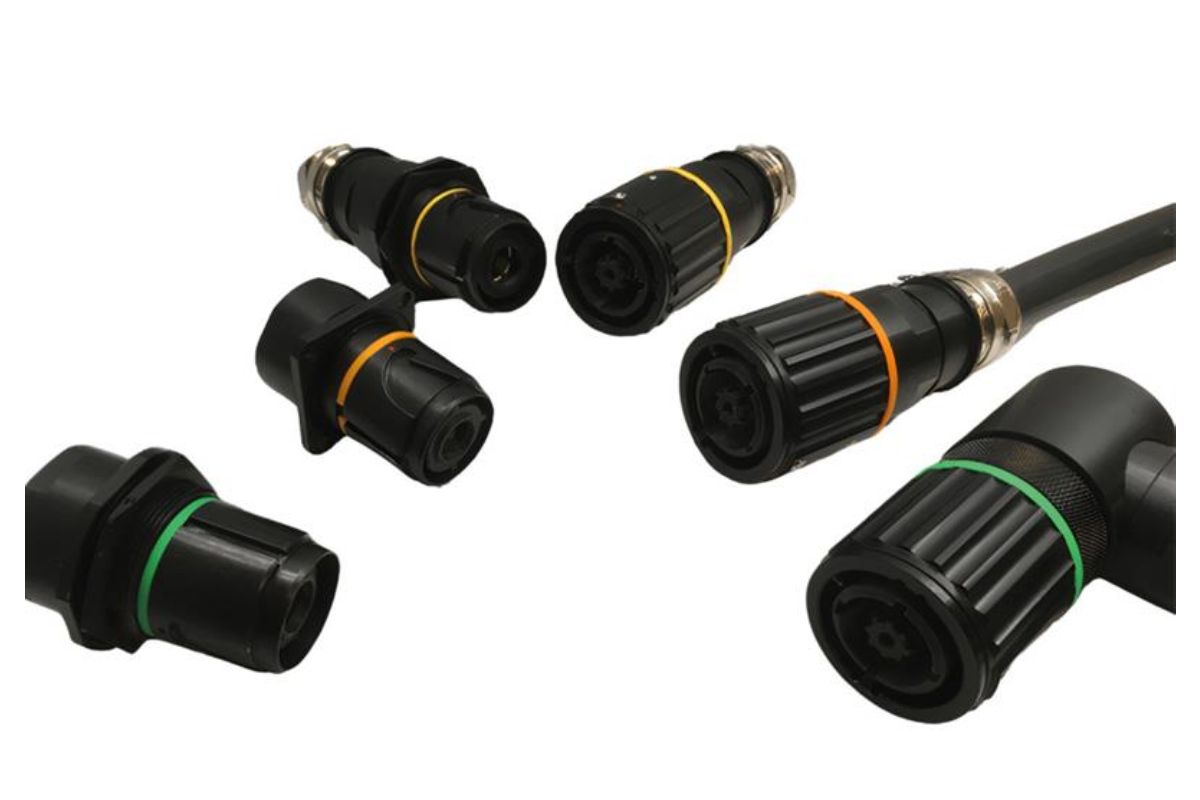Understanding the Importance of Robust Electrical Connectors

Electrical connectors may seem like minor components, but they play a vital role in ensuring the seamless operation of systems across various industries. From automotive applications to rail, marine, industrial, and aerospace environments, connectors are crucial for reliable power and data transmission. However, the differing demands of these sectors require that connectors are not only high-performing but also incredibly durable and robust in design.
In this blog, we delve into some of the most widely used connector types supplied by specialist companies such as LPA Group and explain how the design of the connectors enables them to withstand harsh conditions, ensuring continued functionality and safety in mission-critical applications.
Table of Contents
Why Robust Design Matters
Whether transferring power to a train’s propulsion system or relaying critical sensor data in an aircraft, electrical connectors must remain dependable. Failures can lead to catastrophic consequences ranging from operational downtime to safety hazards. The environments in which these connectors are used often expose them to extreme temperatures, moisture, vibration, mechanical shock, electromagnetic interference (EMI), and corrosive substances. As such, their design must be rugged, secure, and tailored to meet specific environmental challenges.
Key Connector Types and Their Applications
1. Hermetic Connectors
Hermetic connectors are specially sealed to prevent the ingress of gases or liquids, making them ideal for use in environments where contamination can compromise system integrity. These connectors are typically used in aerospace, marine, and industrial applications where pressure differentials or exposure to fluids is a concern.
Applications: Aircraft fuel systems, submarines, vacuum systems, and pressure vessels.
Design Features: Glass-to-metal or ceramic-to-metal seals, corrosion-resistant materials, and high temperature tolerance.
2. Micro-D Connectors
Micro-D connectors are miniature connectors that provide high-density connections in a compact footprint. Despite their small size, they are designed to endure significant mechanical and environmental stress.
Applications: Aerospace avionics, defence electronics, and compact industrial control systems.
Design Features: Shielded contacts for EMI protection, metal shells for added strength, and a secure latching mechanism.
3. PCU High Power Connectors
PCU (Power Connector Units) High Power Connectors are designed to handle large current loads while ensuring minimal resistance and maximum safety. These are essential in electric vehicles (EVs), rail systems, and industrial power distribution.
Applications: EV powertrains, rail propulsion units, and heavy-duty machinery.
Design Features: High-conductivity contacts, heat-resistant housings, locking mechanisms to prevent disconnection under load, and modularity for custom configurations.
4. ARINC 404 Connectors
ARINC 404 connectors are standardised by the aerospace industry and used for avionics packaging. These connectors are designed for use in harsh environments where reliable signal integrity is crucial.
Applications: Commercial and military aircraft, satellites, and ground control systems.
Design Features: Multiple contact arrangements, shielding for EMI, and compatibility with ruggedised rack systems.
5. ARINC 600 Connectors
An evolution of the ARINC 404 standard, ARINC 600 connectors provide higher pin counts and enhanced durability. They are commonly used in next-generation aerospace systems.
Applications: In-flight entertainment, navigation systems, and cockpit avionics.
Design Features: Modular inserts, improved contact retention, EMI shielding, and higher durability under repeated mating cycles.
Sector-Specific Requirements
- Rail: Vibration resistance and flame retardancy are essential. Connectors must also endure prolonged exposure to outdoor conditions.
- Marine: Saltwater corrosion, humidity, and pressure changes necessitate waterproofing and non-corrosive materials.
- Industrial: Must handle electrical noise, dirt, and mechanical abuse in manufacturing environments.
- Aerospace: Lightweight, high-density, and EMI-resistant connectors are key, with a strong emphasis on reliability and compliance with stringent standards.
Conclusion
In demanding sectors like automotive, rail, marine, industrial, and aerospace, the need for robust electrical connectors cannot be overstated. These connectors must deliver flawless performance under pressure, both literally and figuratively. Whether it’s the hermetic seal of a submarine system or the precision of a Micro-D connector in a satellite, their reliability is central to the safe and efficient operation of critical systems.
Choosing the right connector is not just a matter of electrical compatibility; it’s about ensuring long-term performance in challenging environments. As technologies evolve and systems become more interconnected, the importance of rugged, well-engineered connectors will only continue to grow.
Also Read: How to Maintain Industrial Sewing Machines: Preventative Care and Common Faults

